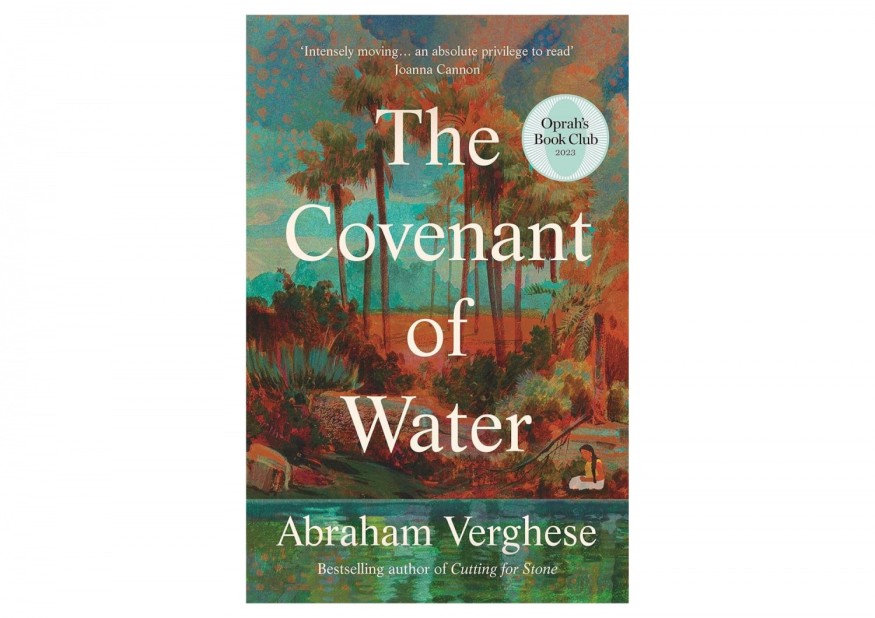
"The Covenant of Water" by Abraham Verghese is a riveting novel that traces the lives of people in the Malabar Coast, India, from 1900 to 1977. The story revolves around a family plagued by a peculiar curse: a drowning fatality every generation, albeit it is no wonder since waters are a common feature in Kerala.
The narrative begins with a 12-year-old girl from Kerala's longstanding Christian community being sent by boat to her arranged marriage. This girl, later known as Big Ammachi, becomes the family matriarch and witnesses profound changes throughout her life, filled with both joy and sorrow. Having endured all these challenges and lost so much, she still does not compromise her faith and love.
Verghese reflects scenes of a past India marked by the progress of medicine against the backdrop of the intricacies of human connection. The novel is devotedly written and weaves together timeless issues such as family, faith, advancement, and the unconquerable spirit of mankind across generations.
The Author
Verghese is a renowned medical practitioner, successful novelist, and supporter of humanistic medicine. He was born in Addis Ababa in 1955 and lived through the civil unrest of his early years. Verghese also worked in U.S. hospitals before attending medical school in India.
His early experiences, particularly caring for AIDS patients during the epidemic's onset in Johnson City, Tennessee, profoundly shaped his perspective on healing versus curing. Verghese's first book documented these states and yielded a lot of recognition. He also attended the Iowa Writers Workshop, where he improved his writing skills, which eventually resulted in more publications in high-ranking outlets.
Verghese served as chief of the Division of Infectious Diseases at Texas Tech Health Sciences Center in El Paso, Texas, and later founded the Center for Medical Humanities and Ethics at the University of Texas Health Science Center at San Antonio.
Due to his dedication to bedside medicine, focusing on its role in advancing medical technology, he was recruited by the Stanford University School of Medicine. He then established Stanford 25, focusing on recognizing diseases through physical signs. Verghese's works offer a unique perspective on medicine's compassionate and human side, making him a sought-after speaker on patient care and medical humanities.
Drowning Legacies and Medical Marvels
According to The Guardian, the book transports readers to Travancore, India, in 1900, where 12-year-old Big Ammachi embarks on a journey to marry a 40-year-old widower. As the matriarch of the Parambil estate, Big Ammachi navigates the family curse of drowning deaths across generations. Parallel to her story is that of Digby Kilgour, a Scottish doctor who joined the Indian medical service during colonial times.
The narratives converge, linking people across generations amid historical events like world wars, India's independence, and the formation of Kerala. Verghese's vivid descriptions capture the region's lush landscapes, cultural rituals, and medical studies' rigor. While the novel ambitiously spans generations and events, its extensive length can challenge pacing and consistency.
Overall, the book stands as a compelling testament to India's history, scientific progress, and sacrifices of past generations, emphasizing the transformative power of perspective and discovery.
Resilience and Redemption
According to The New York Times, Verghese's novel is magnificent and enchanting. The book delves into the complexities of India's cultural and medical makeup. His detailed depictions of medical procedures and human anatomy demonstrate his deep medical knowledge, and his portrayal of Kerala and its culture is both informative and moving.
However, the novel's unrelenting goodness among characters can feel overly idealistic, lacking in nuanced psychological depth and humor. Nevertheless, Verghese's storytelling prowess captivates, drawing readers into a world of love, suffering, and hope, making the book a poignant exploration of human resilience and compassion.
RELATED ARTICLE: 'Moederland: Nine Daughters of South Africa' by Cato Pedder Book Review: Unearthing South Africa's Untold Female Histories












